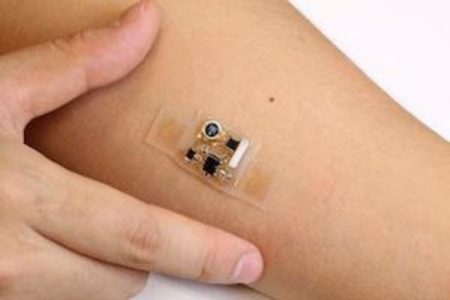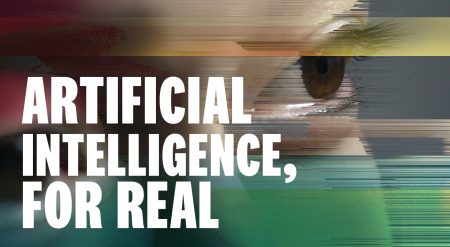January 1, 2018 – Scientific research and technological innovation continue to disrupt humanity’s status quo as the pace of change accelerates. In the more than nine years since I began writing this blog, it is with amazement that I have watched the Internet alter the pace in which knowledge grows. Despite populist resistance to scientific and technical innovation, in the words of the cybernetic Borg, born from the creative minds that have given us Star Trek, “resistance is futile.”
In 2018 we will continue to see scientific discoveries and technological innovation that will sometimes keep many of us off balance. Picking just some of those disruptors and predicting what will happen over the next 12 months, is the subject of this posting. This is not meant to be a comprehensive survey of all the fields of science and technology that we cover here at 21stcentech.com, but rather focuses on seven areas where I believe we will see the greatest drama in terms of change within the year. Here are the first three with the balance to be described in Part 2 tomorrow.
In the meantime, Happy 2018 for those of you who follow the Western calendar.
Artificial Intelligence
A few days ago I wrote that today’s AI is not as smart as a human six-year-old based on IQ tests. But it doesn’t have to be smarter or even equal to the six-year-old to have a profound impact on human society. That’s because AI is proving to be very good in combing through vast amounts of the data we humans collect and helping us find answers to the questions we ask.
It is that capability that has allowed AI to beat the best in the human world at board games.
It is that capability that is helping accelerate our search for exoplanets by studying Kepler data.
It is also being used by researchers to mine the vast repositories of text from scientific and clinical research studies to help accelerate biomedical research in search of cures for cancer, compromised immune systems, and other challenging diseases.
It seems like we have just gotten started using the deep learning capacity of AI to sort through the cumulative knowledge we humans continue to aggregate at an explosive rate to help us make sense of it all. In 2018, I suspect, we will see many positive outcomes from our six-year-old AI companions.
Batteries
In 2018 battery technology will see two continuing trends. The cost per kilowatt hour of electricity will continue to fall. And advancement in the chemistry and materials that allow to store and share electrons will continue to accelerate.
Today we live in a world dominated by lithium-ion battery technology, from the battery packs in electric vehicles to the ones integrated into our smartphones. In 2018 we may begin to see the fruits of research into battery storage lead to better performance and durability. Today’s lithium-ion technology is far better than the battery packs I remember in my laptop computer models from ten years ago. The batteries retain a charge longer and endure more recharge cycles before the chemistry and materials deteriorate.
With rare exception, lithium-ion battery imperfections or aging leads to a device meltdown or fire. But now we are seeing new compounds that form protective membranes around the volatile materials in batteries to ensure they operate with greater efficiency and for longer periods.
It is highly likely that 2018 will see battery-powered electric vehicles see range extended from a fleet average today of 200 kilometers (12o miles) to over 600 kilometers (360 miles). And that’s only on the lithium-ion front. New materials and technologies that we should start to see this year include iron-air, aluminum-air, solid sodium, other solid state batteries, and instantly rechargeable flow batteries.
Biomedicine and Biomedical Engineering
A medical device revolution is underway with miniaturization of testing equipment and swallowable nanotechnology that can be used to target diseases. External testing includes labs on a chip that cost less than $100 U.S., and inexpensive diagnostic pens containing mass spectrometers for identifying diseases. New less invasive devices are currently being trialed to eliminate biopsies in testing tumors for the presence of cancer cells.
Medical tech devices no bigger than a grain of rice are being tested in clinical trials to provide wireless pacing to correct defective heart rhythms.
Reprogramming damaged cells will soon have a new technology to help with repairs, nanochips that release targeted doses of medication.
Wearable electronic skin patches are now available for personal wellness monitoring and should become prevalent in 2018. Medical patches which transmit to a smartphone app are part of the technology innovation. The patches transmit the data to the app which then can be shared with a family physician.
In the field of vaccines, a malaria vaccine is being successfully trialed in several African countries. New personalized cancer vaccines, one which has already been effective in reversing childhood leukemia, will soon be available for the treatment and cure of other life-threatening diseases. And then there are new vaccines requiring no refrigeration, being funded by the Bill and Melinda Gates Foundation, designed to protect populations from many tropical diseases.












‘the deeper we go, the less we know’
TREO is developing an algorithm for compassion. Emotion may be thought of as a system of variables which lend texture and context, explicit and implicitly. Giving description of these variables to create meaningful programming instruction sets is what REAAL is about.
Reactive Executables: Acronyms, Algorithms and Linguistics (REAAL), concept for a spoken word programming language, an acronymic language interface for personalized AI.
We all use language differently. Your definition of Compassion will be different from mine, based on experience and vocabulary.
Teaching an AI system to understand and account for underlying emotions, memories, fears, loves, etc, which motivate an act or lack of compassion in an individual, is critical in AI learning and decision making.
In the process, we will learn much about ourselves.
We are the prototype. AI should help us become a better version of ourselves, not a replacement.
REAAL Intelligence
Dear Anthony,
I would appreciate your comments to the posting on December 30th, https://www.21stcentech.com/current-state-ai-2018/ which I believe is a good starting point for a discussion about algorithms that convey an AI’s understanding of human emotions, fears, and compassion. In creating prototype AIs that are coded for these human characteristics will they not also include the full range of humanity’s emotions which also include rage, and hate. An AI created for killer robots might be endowed not just with the acuity to know and kill an enemy, but also to hate one. I keep thinking that binary logic results in an opposite response to love and empathy whether 0 or 1. And if we develop emotion algorithms for quantum computing technology, will we see subtelty, may I even suggest Machiavellian characteristics in the emotions conveyed by an AI. Please comment.
perhaps ‘compassionate objectivity’ is a better way to describe a system detached from emotion but understanding the patterns of its subtleties and nuances.
Eastern spiritual practices of detachment and emptiness, meditation to reach enlightenment, is the ideal TREO is striving to reach in its AI development
Please keep me posted about your progress in developing the algorithm. I would love to write about it once you introduce it at beta level.
‘Compassion’s Algorithm – Giving AI EQ’, is an article I’m putting together about the concept and the logic to invite comments and collaboration from subject matter experts in AI, Semantics, NLP, deep learning, neural networks, quantum computing.
May I send you a draft after its completed for sharing as a guest blogger post?